More recently, porridge made from this cereal was sung by praises and considered it an almost unique dish in its nutrition in baby food. And today, the benchmarks have shifted in a completely different direction - pediatricians urge parents to exclude semolina from the diet of their little ones. And in foreign countries there is no special love for this product ... To find out the whole truth about the properties of cereals, you need to know from which grain the semolina is made, what is included in its composition and how to properly use this product.
Material Content:
What grain is semolina made of?
For many, the question of what semolina is made from may be taken by surprise. Indeed, most often the name comes from cereals or other types of plants, which are ground to obtain the desired consistency.
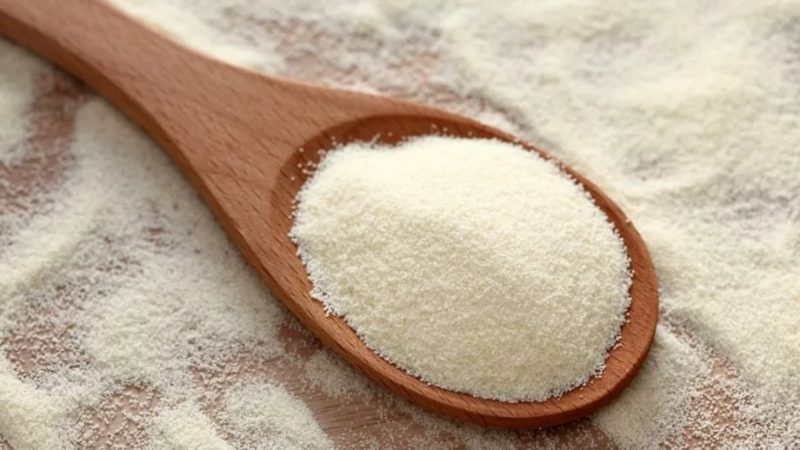
Only in this case is the situation different. This is ordinary wheat groats, only of a larger grinding than is done for the manufacture of flour.
There are several versions regarding the name. Some explain the name by the similarity of the product with another porridge, which was cooked from manna seeds, meadow grass, most often used for animal feed.
The second version is based on the Christian belief about the manna from heaven, which God sends in order to saturate a person (from the Hebrew man - “man”). Since the cereal is very nutritious and satisfying, they carry out such an association with the Bible story.
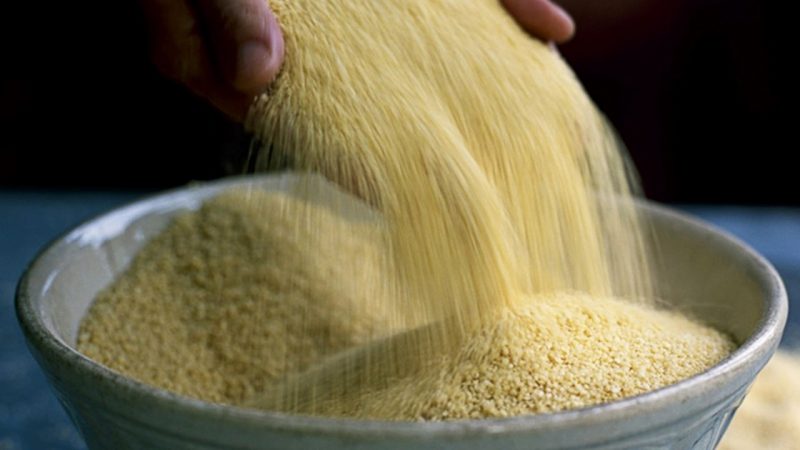
Groats are made from different varieties of wheat, which affects the category of semolina indicated on the package:
- hard grades (T);
- soft wheat (M);
- a combination of different grains (TM).
In order for the cereal to have a familiar appearance for us, it goes through several stages.
- Wheat grains do not crush small parts.
- The resulting raw materials are ground and bran is separated.
- The remaining cores are sieved.
- Coarsely ground grains.
The composition and calorie content of the product
High-quality semolina has a lighter color than the grayish version of low-grade products. Ideal groats are grains, not a powdery substance.
Production from wheat grains is strictly regulated at the exit from the conveyor by the percentage of necessary components.
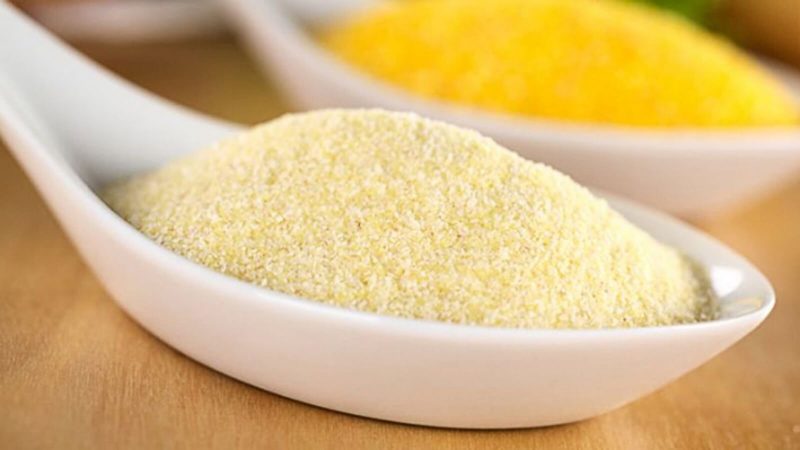
Croup consists of:
- starch (about 70%);
- food substances (27 - 28%);
- fibers (2-3%).
The chemical composition of cereals is presented in the following form:
- B vitamins;
- tocopherol;
- a nicotinic acid;
- iron;
- potassium;
- phosphorus;
- copper;
- calcium;
- zinc;
- sodium;
- manganese;
- magnesium;
- water;
- folic acid;
- ash.
Dry cereal contains 330 kcal per hundred grams, if you make semolina porridge in water, then in 100 grams - 80 kcal, and in the same porridge in milk - already more calories, 98.
Useful properties for the human body
The inclusion of wheat groats in the diet allows you to saturate the body with the necessary vitamins, amino acids and minerals.

What features of the product speak in favor of semolina?
Among the properties it should be noted:
- strengthening the nervous system;
- mood improvement;
- getting rid of fatigue;
- stimulation of the normal functioning of the cardiovascular system;
- normalization of cholesterol in the blood;
- strengthening the body's defenses;
- recovery after long and serious illnesses, surgical intervention.
In addition to the internal use of cereals is used in cosmetology. Masks and scrubs based on it help to improve skin color, cleanse the face from redness and rash.
The use of semolina in cooking
The most popular cereal recipe, with which semolina is actually associated, is Guryev’s milk porridge.

The dish got its name thanks to the ingenious cook of Count Guriev. At the beginning of the 19th century, he came up with an excellent treat, which since then began to be served not only to households, but also to guests in Russian courtyards.
To cook such a treat, the cook cooked semolina porridge in milk, and in the process of cooking added additional components to it.
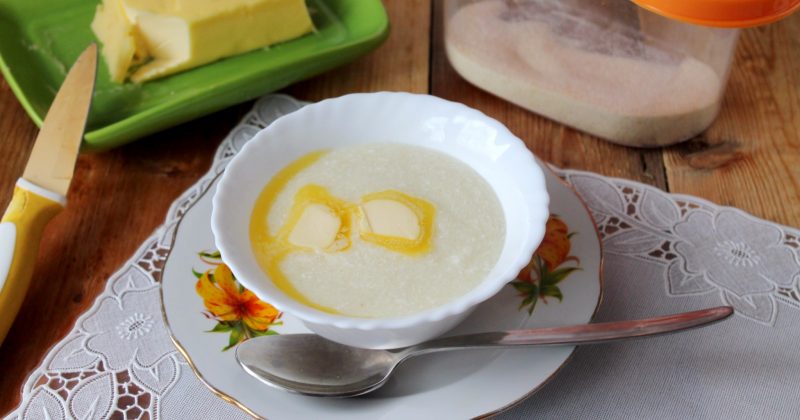
Among them:
- creamy foam;
- honey;
- jam;
- candied fruit;
- dried fruits;
- walnuts;
- almond.
The dish was not only especially tasty, but also extremely useful. Such a number of ingredients allows you to get enough and replenish the body with the necessary vitamins.
Semolina porridge is known to everyone, but it is not the only dish of wheat groats.
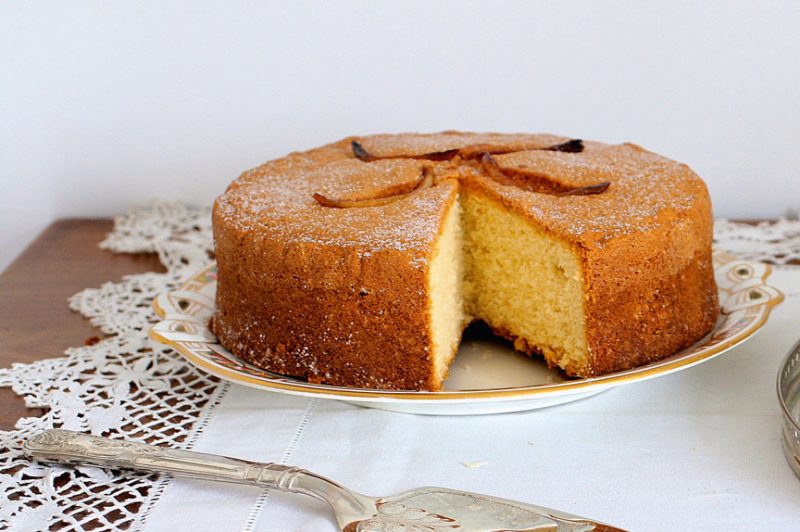
Semka is also used:
- for filling in the first dishes;
- in dumplings, dumplings;
- for casseroles and meatballs;
- in minced meat;
- for fritters, pancakes;
- as a breading for meat and vegetables when frying;
- for manna - a pie of dry cereals and cooked porridge;
- in berry mousses, jelly;
- for cheesecakes, muffins, cookies;
- as a topping of a baking sheet so that the pies do not burn.
Look at the packaging before buying cereals! Grain "M" is more suitable for cereals, meatballs and casseroles. Brand "T" is recommended for use in the preparation of sweet dishes, soups and minced meat.
How can you replace semolina in cooking
If the necessary cereals were not found in the kitchen, and you need it for cooking a recipe, or for some reason you can’t use it, you can safely replace it with other ingredients similar in composition and characteristics.
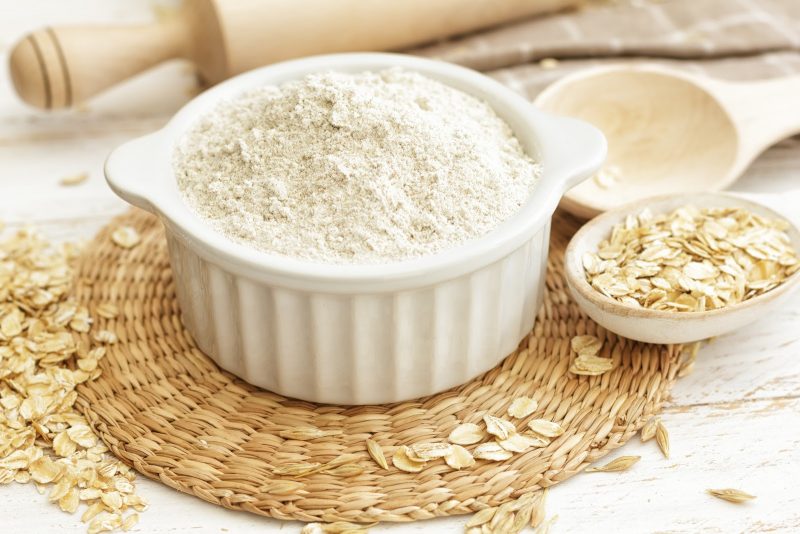
Among them:
- oatmeal or flour;
- Wheat flour;
- rice flour (gluten-free version);
- starch - corn or potato;
- bran;
- Rye flour;
- almond shavings;
- coconut flour;
- crackers;
- wheat germ flour.
Many housewives do the opposite: replace flour with semolina. Thus, they give dishes, such as meatballs, a richer and softer taste.
Contraindications
If you use porridge from this cereal too often, you can provoke the development of various pathologies.
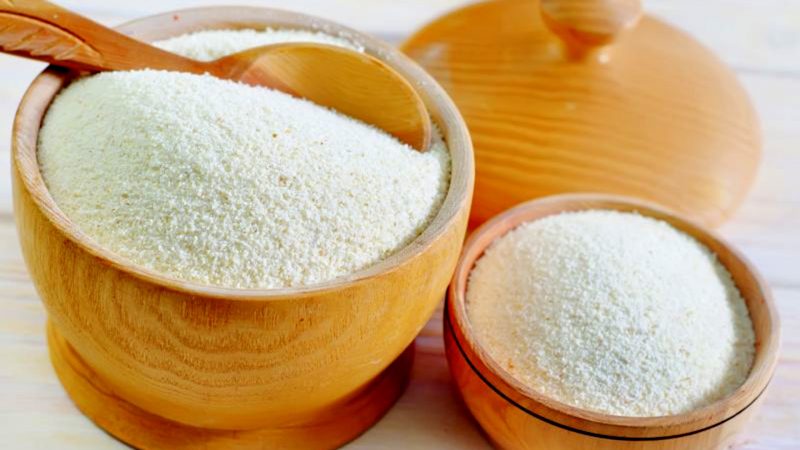
Namely:
- allergic reactions in the form of rash, eczema;
- intestinal disorders in the form of diarrhea, flatulence;
- decreased calcium absorption, which threatens bone pathologies;
- obesity.
Due to the fact that the substances in the cereal do not allow calcium to be fully absorbed into the bloodstream, which means that pediatricians who are less than 1 year old should not be supplied with the necessary amount of organs to porridge, they do not recommend it. After all, this particular child is growing rapidly, and calcium is necessary for the normal development of all systems, especially bone.
Another reason when semolina is not desirable in the diet of babies is the starch content in an amount that can not be absorbed by the children's body. An unprepared stomach simply can not cope with such volumes that it negatively affects its microflora. And this is the first step to severe pathologies of the gastrointestinal tract.
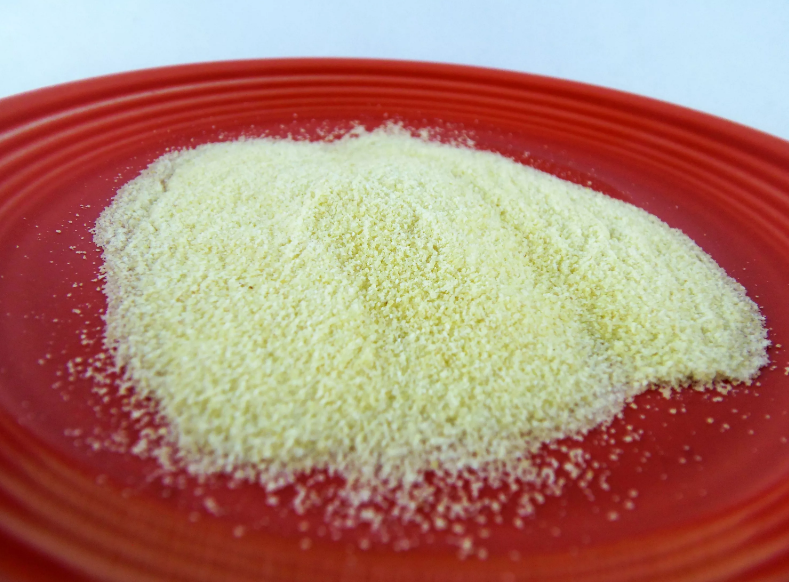
In addition to childhood, contraindications to the use of semolina are:
- celiac disease (an allergy to gluten found in cereals);
- diabetes;
- chronic diseases of the digestive tract.
Those who follow a diet, people who are prone to obesity, and athletes are better off not introducing the product into the diet, so that together with a portion of semolina porridge do not get a couple of extra pounds.
The menu should be varied and balanced. Semolina will benefit the body with moderate and proper use.












